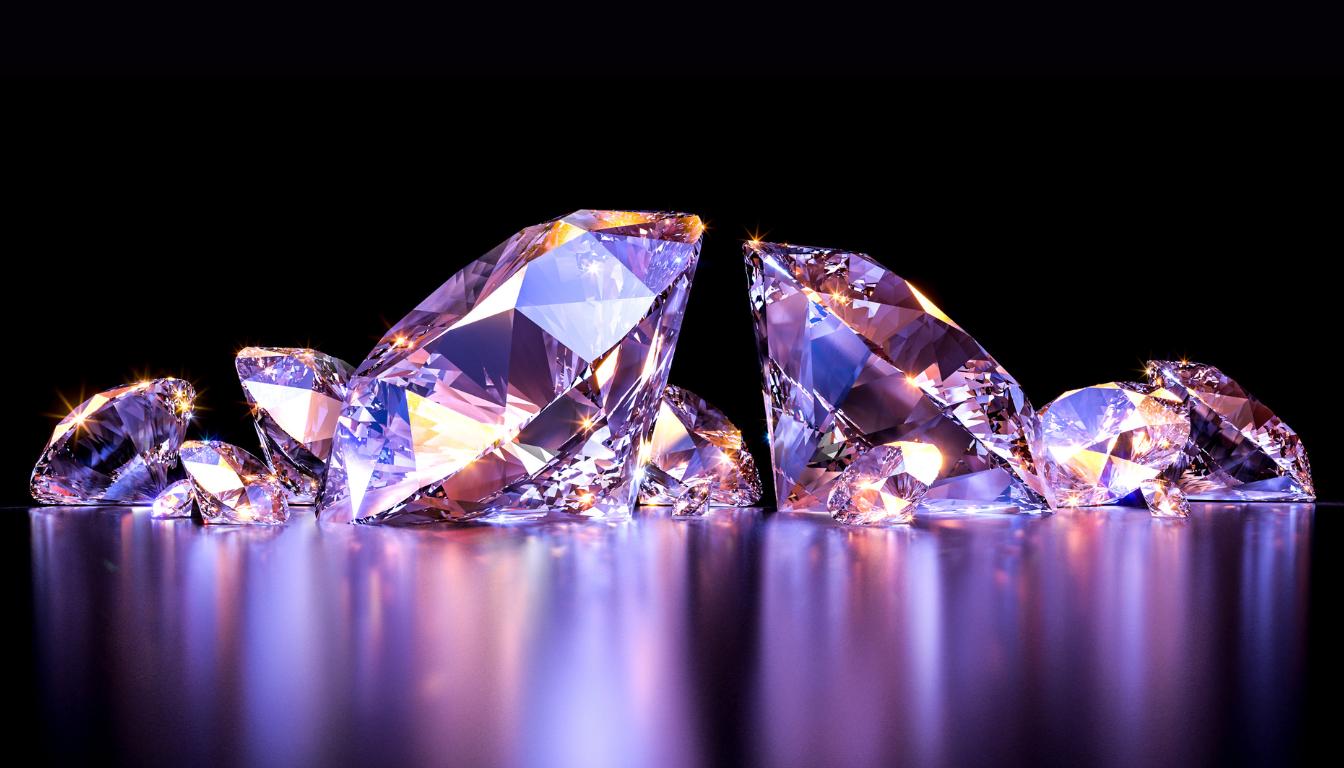Diamonds, in general, and even purple diamonds, are also formed within the Earth’s mantle, more particularly between 90 and 120 miles beneath the surface. This process involves carbon that undergoes pressure and temperatures for millions of years. Nonetheless, purple diamond coloration has only been found to be due to certain impurities and the diamond lattice system.
There are several colors of diamonds, some of which are much rarer than others. Colored diamonds are extremely rare. While a few fine natural fancy diamonds are mined annually, only a negligible percentage constitute gem quality, which entails the diamonds’ cutting and polishing for sale. One of the most challenging colors of diamonds is the purple diamond among all the rainbow colors.
It was associated with royalties and honor; in the past, only kings could buy purple cloth, and the heart purple medal was awarded to soldiers who were killed or injured in the line of duty. With all these large and lavish connotations, it is little wonder that these diamonds are as popular as they are.
For years, diamonds have been the gemstone of choice of man because of their ability to sparkle, their hardness, and the glamour that accompanies them. Of all the hues that diamonds can potentially contain, purple is one of the most elusive and, certainly, one of the most alluring. Their color, in combination with a great amount of information about their origin and methods of formation, makes them an interesting subject of study for gemologists, collectors, and lovers of jewels. As fascinating as the color of rubies and sapphires, this article deals with the nature, origin, meaning, and role of purple diamonds in the gemstone market.
Table of Contents
Understanding Color in Diamonds

Diamonds, of course, are colorless, but they can occur in any shade for certain reasons, as you will find out later. In recent years, companies have established a color grading scale that defines the hue, tone, and saturation of the diamond.
Hue: Hue, in this case, is the primary color of the diamond as described (purple).
Tone: Tone refers to the brightness or darkness of the used shade.
Saturation: Saturation reflects the concentration of the hue; in other words, the saturation defines how intense the color is.
While purple-colored diamonds are quite rare, their shade can sometimes vary from light purple to almost violet. The highest demand is created by highly saturated and moderately dark-shaded gem-quality purple-colored diamonds.
Formation of Purple Diamonds
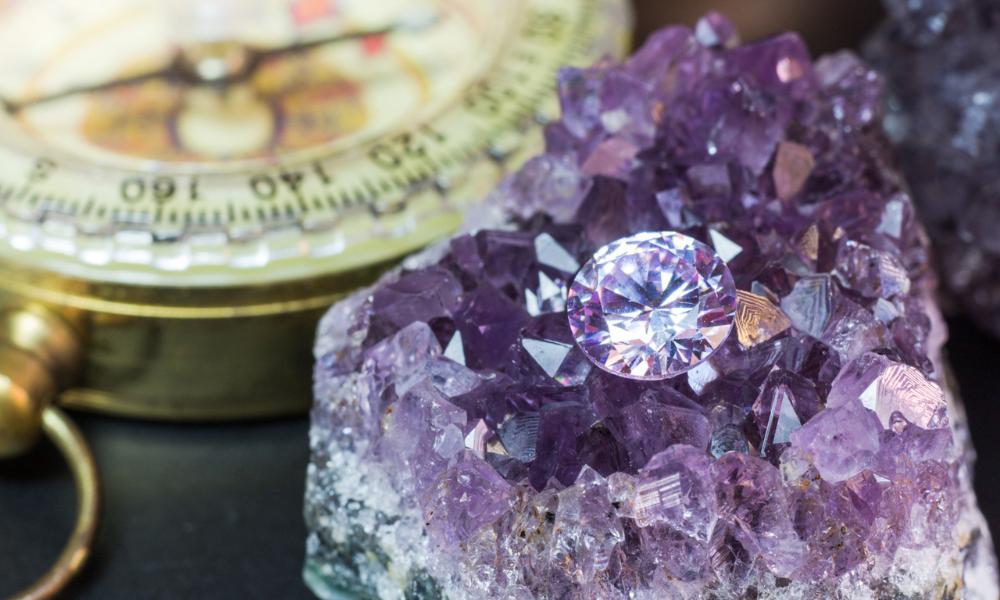
Diamonds, especially purple ones, are created at a very deep depth of the Earth’s mantle, extending about 90 to 120ml deep. This process involves carbon being exposed to pressure and temperatures for millions of years. However, the natural color of most diamonds, especially purple ones, is mainly caused by certain trace elements and crystal lattice.
The Role of Boron and Radiation
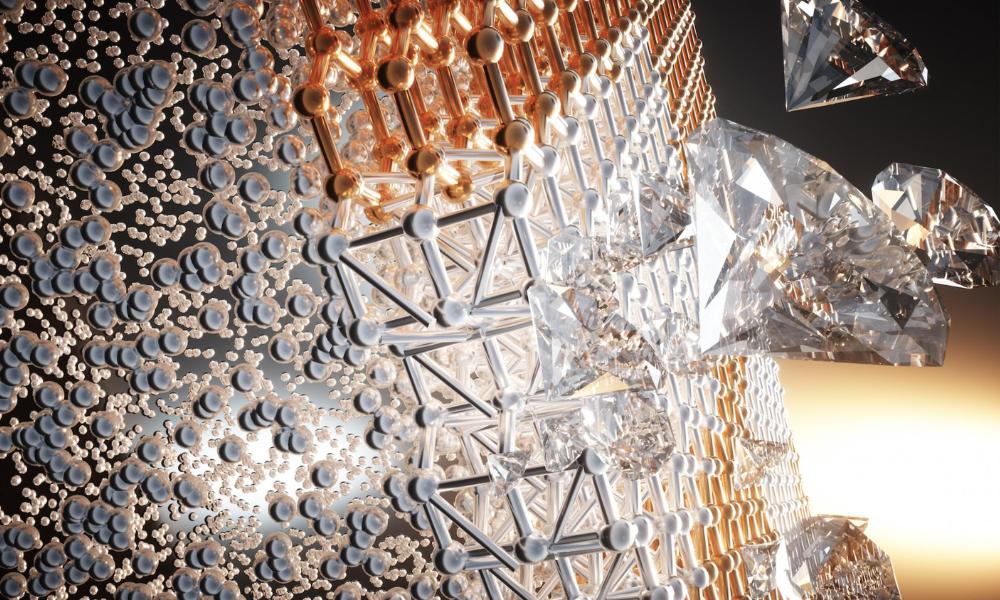
Purple diamonds themselves are believed to be colored through the action of boron, which imparts a bluish hue when exposed to a certain kind of radiation. This radiation damages the structure of the diamond by creating vacancies in the positions of the carbon atoms. These defects can cause the agents to determine what gives this diamond the unique color and create the deep purple palette.
Notable Sources of Purple Diamonds
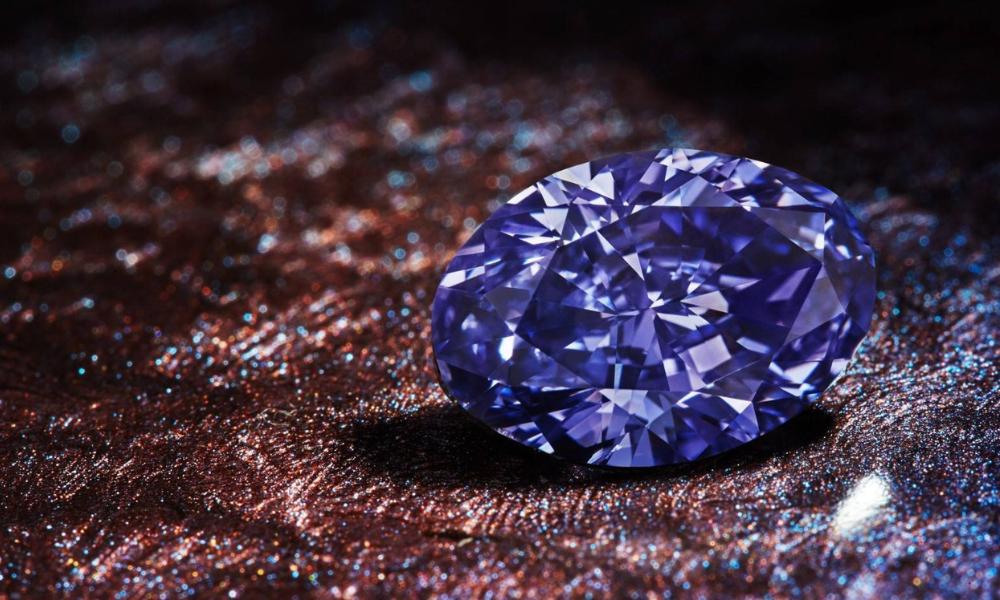
Argyle Mine
Since its launch in 1983, the Argyle mine in Western Australia has been the most renowned supplier of purple diamonds. While the mine itself is famous for pink and red diamonds, it has also yielded some remarkable purple-colored diamonds. The Argyle Mine shut down in 2020, which has had a major effect on the availability of purple color-shade diamonds for sale.
While Argyle is the most renowned source, purple diamonds have also been found in other locations around the world, including:
Other Sources
South Africa is well known for its ability to yield various shades of diamonds, including purple ones.
Russia: This colored gemstone is said to be in one of the South African mines that has produced diamonds of this color.
Canada: Appearing as a source of colored diamonds, some of the mines yield different shades.
The Rarity of Purple Diamonds
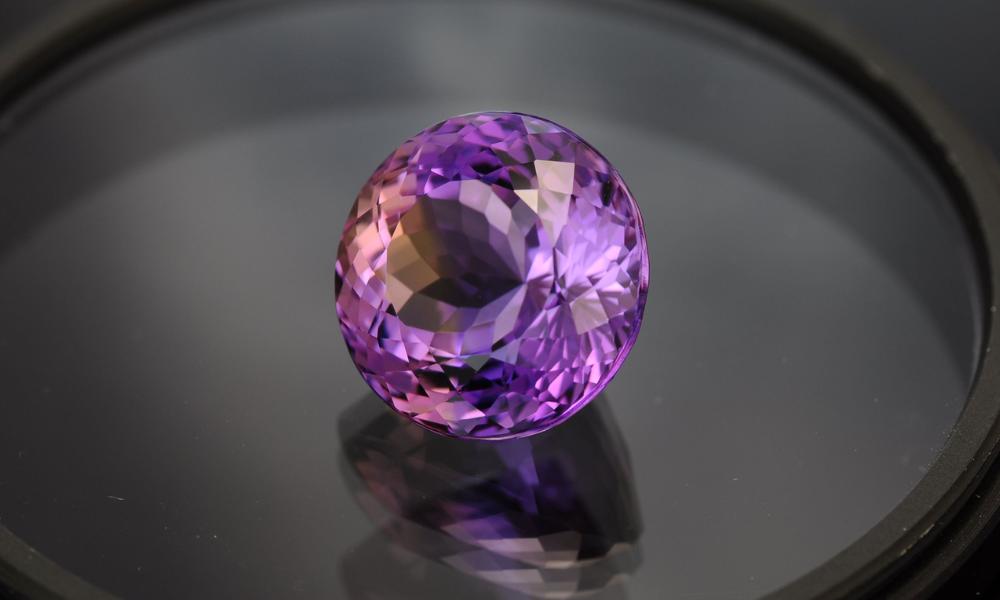
Purple diamonds are among the rarest types of colored diamonds in the market. Only an insignificant number of diamonds mined are colored, much less purple ones. This tends to be even rarer since the Argyle Mine has been shut down, which was responsible for providing almost one-third of the market supply.
Market Value of Purple Diamonds
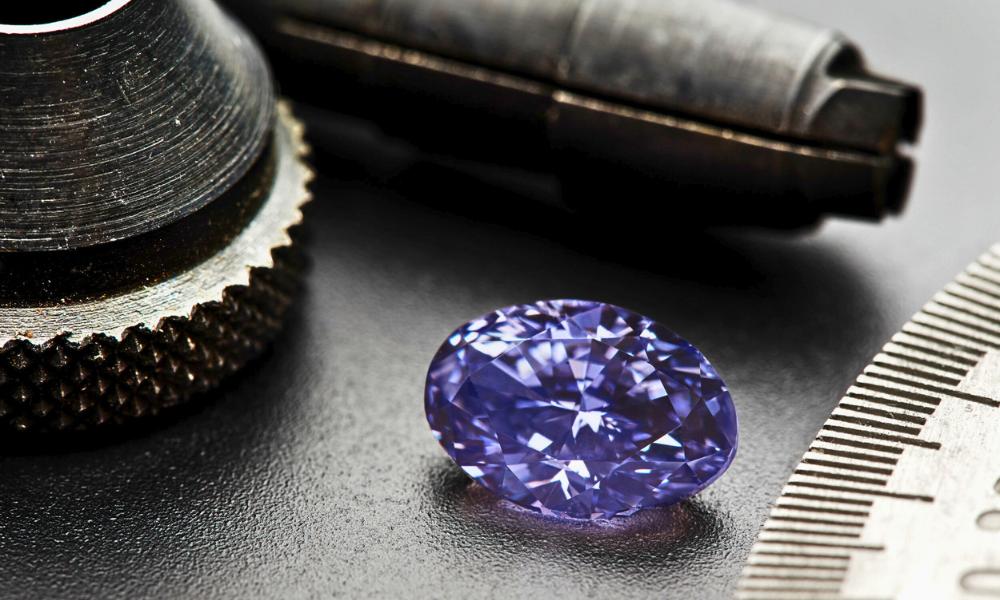
Since this forms a small percentage of the diamonds found in the natural industry, they are expensive in the market. The value is determined by various factors, including:
Color: The type and hue of violet also determine the cost of the product or service provided. Bright purple diamonds are the most expensive.
Clarity: As with any diamond inclusions, defects may affect its overall worth. The clearer the diamond, the higher its quality usually is, and consequently, the costlier it is.
Cut: The direction in which the facets of a diamond are oriented will either increase or decrease the stone’s brilliance and perceived color, thus its value.
The Symbolism and Cultural Significance of Purple Diamonds
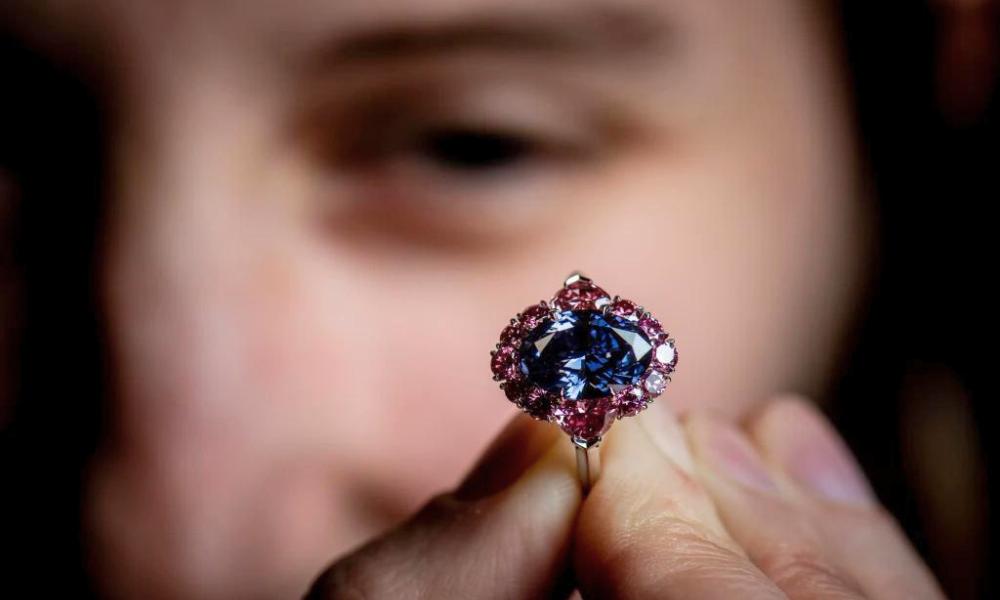
The color purple has always symbolized royalty, luxury, and might. In many cultures, purple is the color of wealth, nobility, and spirituality. The rarity and beauty of purple-colored diamonds further enhance their status as symbols of wealth and exclusivity.
Historical Context
Over centuries, purple has been associated with royals and nobility. In Syndicate ancient Rome, only the emperors could wear purple. Similarly, in many other cultures, the dyes for purple pieces of cloth were so expensive that only the rich could afford purple wear, hence denoting riches. This history enriches the theme of the purple diamonds, and by possessing them, a person feels like a modern monarch or a king.
Modern Interpretations
In the modern world, purple diamonds represent exclusivity and nonconformity to norms. They are retail and intended for individuals looking for a unique piece from the conventional white diamond, thus being used in engagement rings and other fine jewelry. The growing interest in colored diamonds is symptomatic of a generally increasing trend toward customization in jewelry.
Care and Maintenance of Purple Diamonds
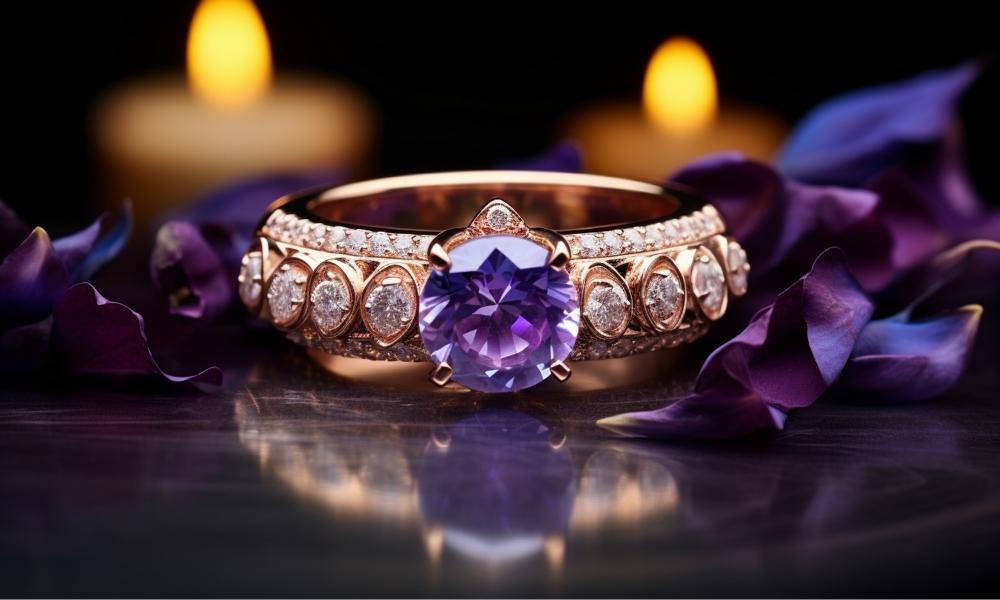
Like all diamonds, the purple ones are strong and can last the user a lifetime if handled properly and properly cared for. Here are some tips for maintaining their beauty:
Cleaning
Regular Cleaning: This is because dirt or oils will build up around the purple diamond, which can be removed using warm, soapy water and a soft brush.
Avoid Harsh Chemicals: Strong agitating solutions like bleach should also be avoided since they may damage the diamond’s coating by causing surface abrasion.
Storage
Safe Storage: Keep purple diamonds in a soft pouch or in the jewelry box so they don’t get scratched by other stones.
Separate from Other Jewelry: Ideally, jewelry should be stored separately from other items so that they are unlikely to scratch each other.
Cost of Purple Diamonds
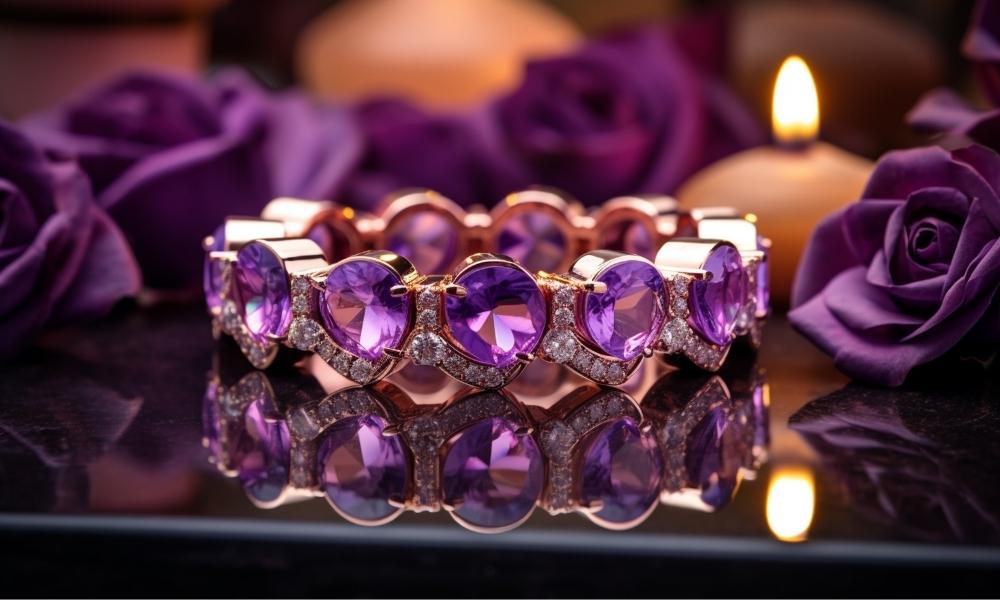
In fact, there is no way to pinpoint a formula or price chart that would give the actual value of the purple diamond. That is where a general guidebook, in conjunction with some Internet research, can help you navigate to a ballpark figure and approximate the kind of diamond you are interested in.
Changing colors generally decreases the perceived quality of the gem and, along with it, the price, especially over a secondary hue of pink and definitely over pure purple.
In relation to color intensity, purple-colored diamonds can go from light to fancy light, fancy dark, fancy intense, fancy vivid, and fancy deep.
The vast majority lie on the lighter side of the spectrum, and as such, there is a stronger concentration of amethysts with a much ‘richer’ purple tone. These are much rarer, more valuable, and therefore more popular and pricier than the rest.
In today’s market, Ivory or light-colored pink-purple diamonds (pink is quite common and is considered the secondary color) cost between $10,000 and $25,000/ct. for diamonds below half a carat and even up to 0.10ct. with SI clarity.
If you are to escalate the intensity any further to fancy or intense, you quickly jump to $25000 to $50000 per carat and beyond. And prices will go up much higher very soon.
Purple Diamond vs Violet Diamond

You don’t need to be confused anymore if, while browsing, you come across violet diamonds and some that are graded simply as purple; violet diamonds are not the same as purple diamonds. However, they must be a little different from a gemological point of view, even if they both look marvelous to the viewer’s eye.
Before going further, let me point to the difference between these two. The distinction between true purple-colored diamonds and violet ones is that the deformations in the crystal lattice mentioned above create grain-like lines of purple in the stone. In contrast, ‘violet’ diamonds are colored by a chemical element called hydrogen, which is present only at minuscule rates.
Some Famous Purple Diamonds
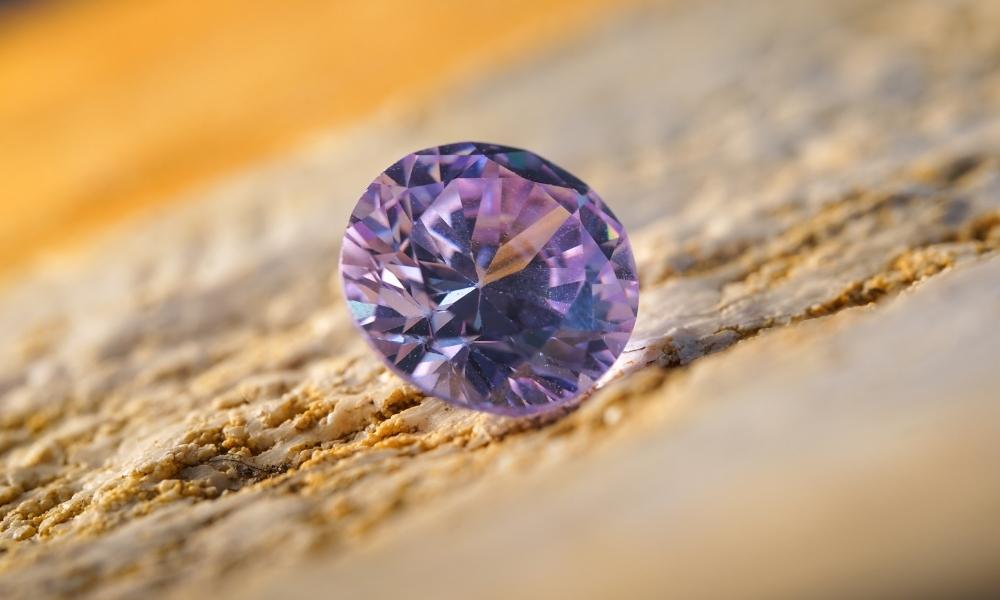
Despite the fact that there are not many recognizable purple diamonds, some of the stones have certainly left a mark. What makes curiosity about these gems grow is that there is very little information available on them Existing knowledge.
One of the most famous diamonds is the Royal Purple Heart Diamond. It is the largest fancy, vivid purple diamond worldwide, and the Israeli Diamond Institute approved this information. According to the source, the 7.34-carat diamond was estimated to have originated from Russia. Julius Klein Diamond Corporate, which owns the diamond, opted for a corporate cut that would give the diamond the perfect heart shape and better brilliance and clarity. We don’t know whether anyone today owns the Royal Purple Heart.
Supreme Purple Diamond Heart has to be mentioned as one more legend. Perhaps it is even more unknown. Not a single person can know the exact color or even clarity grade of this gem. The only thing that is beyond doubt, though, is that in spite of its name, this diamond is cut in a round brilliant cut and has a dimension of 2-5 carats.
It is unclear where the stone originated. However, the Israeli Diamond Institute suggests that many insist it was cut within the last 30 years in the Amazon region. The institute said this diamond is so enthralling because, when faced with it, one can see different shades of purple. Some converged to a very dark shade of red, whereas to others, it seemed like a very dark shade of purple.
For example, in 2003, basketball player Kobe Bryant of the Lakers team paid his wife Vanessa an 8-carat purple diamond ring as an apology. The value of the diamond was estimated as high as $4 million.
Synthetic Purple Diamonds
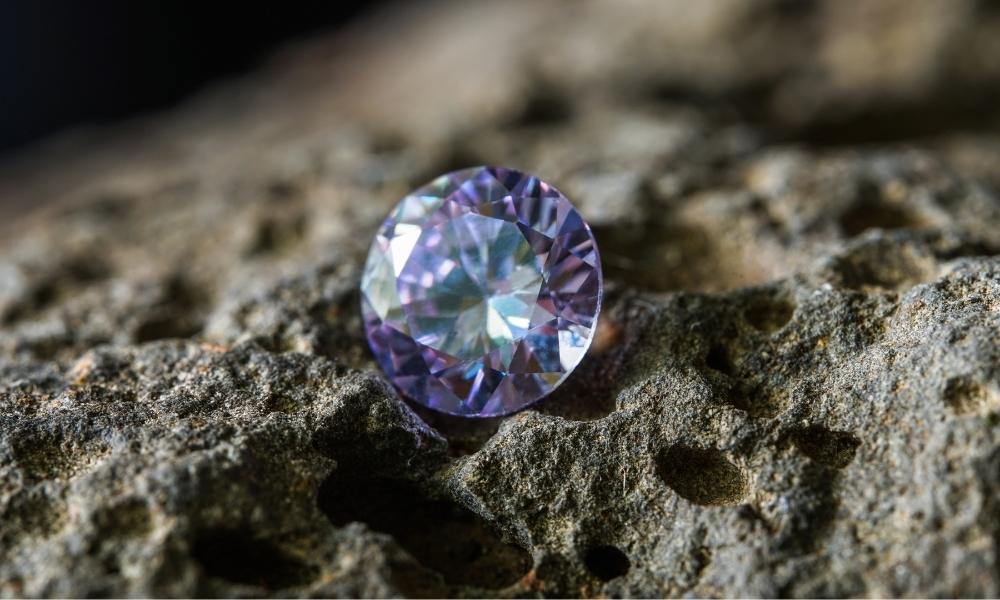
While most natural purple diamonds are colored by graining due to sheer stress imposed on them after their crystal has formed, both natural diamonds that have been bleached to reveal purple and synthetic purple-colored diamonds can do so more appropriately through Nitrogen-Vacancy (NV) Centers. NV centers are believed to be points in the lattice of a diamond where one atom of nitrogen occupies a site that is meant to have a carbon atom.
NV centers are incredibly sparse in natural, externally untreated purple-colored diamonds. However, scientists synthesized them relatively easily by irradiating a stone and then carefully consolidating it. Almost all synthetic purple stones, regardless of the CVD method or the more commonly known HPHT technique, also owe their color to NV centers.
Conclusion
Purple diamonds are louche gemstones of lovely quality and rich past and present elegance and richness. Due to their beautiful color and the fact that they are so rare, their demand for gemstones is very high. While more people enter the market to look at colored diamonds, purple-colored diamonds remain the diamond of the higher class and sophistication.
If you’re an aficionado or just have a curious interest in those out-of-the-ordinary colored gemstones, purple-colored diamonds give you an insight into the wonderland of creation. After some years of changing the market, the sources seem to be decreasing, and the mystery of purple-colored diamonds may add an even more appealing aspect to this kind of stone, making them one of the most desired in the world.
FAQs about Purple Diamond
Q1. Are purple diamonds more expensive?
Purple-colored diamonds are rare, so they are equally expensive, as the rarest diamond is the most expensive. For instance, the estimated cost of 0.42 carats of fancy purple diamonds was about $15200. The depth of the stone color is one factor that determines the cost of the diamond in its entirety.
Q2. Is the purple diamond real?
To answer this question, yes, there are actually purple diamonds out there! However, treated and synthesized purple diamonds are significantly more present than natural ones. It is a bit of a mystery how natural purple-colored diamonds acquire their color.
It is important to point out that natural diamonds can be purple in color. I must say, it is hard to think that these stones are as natural as one may really think of them. More often, they are virtually unheard of because locating them is practically a quest for the impossible, which is why most people don’t know they are real. Not only that, but they come in a huge variety of shades, which we will consider shortly. See also Consumer Product Design.
Q3. What are purple diamonds called?
There are also natural purple diamonds, such as grape, orchid, and plum diamonds. For the ones with lesser purple shades, there are names like lilac or mauve diamonds.
Q4. What is the rarest color of diamond?
Red, green, purple, and orange are among the least frequently encountered ones. In 1956, GIA® began to release its origin of color reports for colored diamonds. Based on years of research and evaluation of thousands of colored diamonds, the GIA Colored Diamond Grading System is now the benchmark for gauging the value of these extraordinary gems.
Q5. What color diamond is the cheapest?
White (not very clear, but diamonds with a milky white tinge) and black diamonds are relatively rare, but they have not enticed the public and are rated as the least valuable compared to colored diamonds.
To answer the question of the rarity of purple diamonds, you must first look at the basics of natural fancy-color diamonds.
Few fancy-colored diamonds occur naturally, and within this special niche, they split into a number of base colors. Blue, pink, yellow, green, orange, brown, and gray are just a few of the diamond colors available.
It gets even more complicated because special shades are created out of two or even three actual colors. Just as not all floppy disks are compatible and not all floppy disks can accompany a laser printer, not all color combinations are synthesized. For example, you cannot find blue-purple diamonds. However, now a number of other combinations exist, like diamond pink purple, which is very much in demand.
While it may seem that fancy-colored diamonds exist in abundance from the point of view of many colors (or combinations of colors), they are, to the contrary, rare. Only one-tenth of a carat of the diamonds extracted is a gem-quality fancy diamond.
However, within the guilloché fancy diamond segment, purple diamonds remain one of the scariest in the spectrum. Perhaps it can only be inferior to the red diamonds.
Besides the abovementioned, pure purple diamonds are very scarce, making them among the most expensive pieces to own. On the whole, the double-toned or secondary-coloured/secondary-hued diamonds, which lay buried here and there, just about discernible, are the ones that can be easily found, more particularly pink, gray, or brown diamonds.
Stay Tuned to Gems Tycoon for all gems-related articles.

